Kleiner’s Korner: The Velocci Papers Part 2 - The 1929 Proposal to Retrofit the Motor Parkway
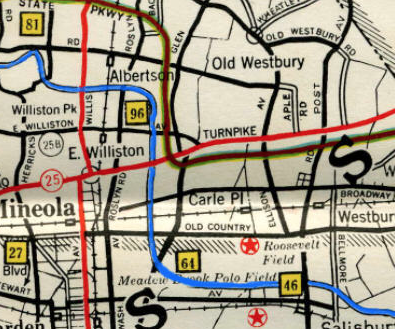
Part 2 of the Velocci Papers details the plan proposed by a group of Long Islanders to reuse the Motor Parkway instead of building the Northern State Parkway.
The plan was proposed by a citizens committee and supported by a study conducted by the head of The School of City Planning at Harvard University and presented to the press and numerous local officials.
Art Kleiner
The Nassau County Citizen's Committee
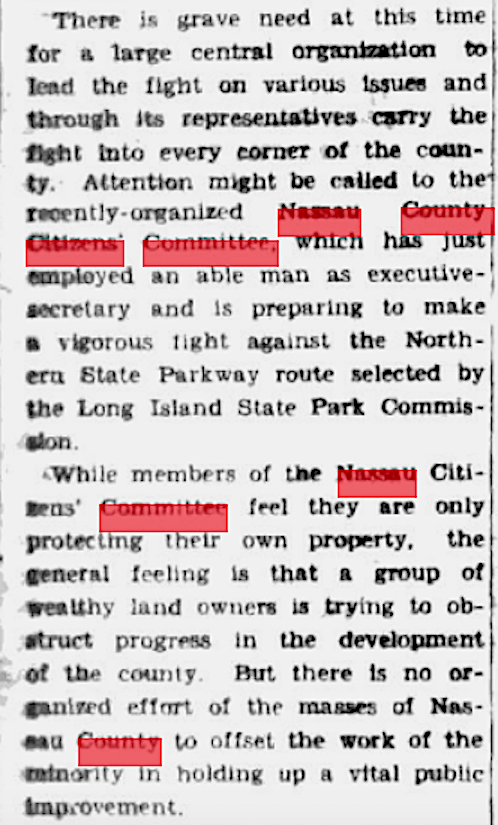
The plan was promoted by The Nassau County Citizens Committee (NCCC) which was formed in 1929 to monitor and advise development efforts in the county. Critics however, saw it as a means of wealthy land owners to obstruct development, particularly the Northern State Parkway. (The Nassau Daily Review Jun. 8, 1929)
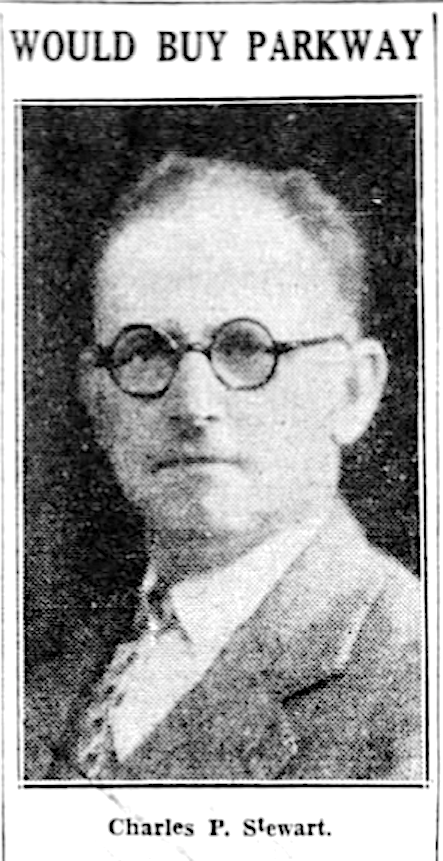
Charles P. Stewart was selected to head the organization which was charted in April, 1929 and initially had 75 members. (Brooklyn Daily Eagle (Jul. 29, 1929)
The Organization's Goals and Membership
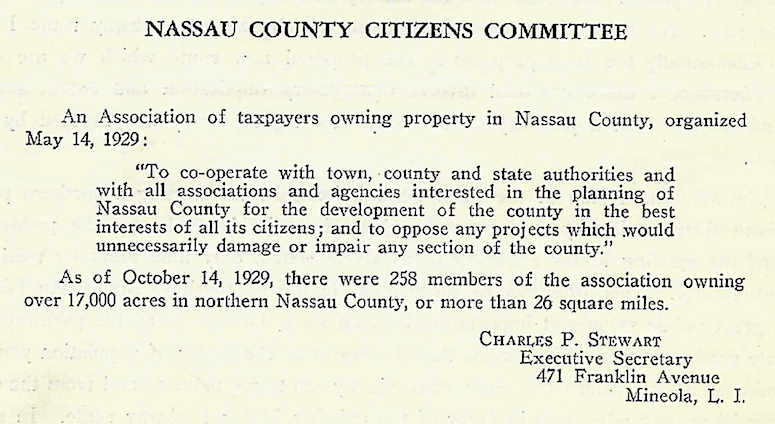
By October membership reached 258 members who owned over 17,000 acres in northern Nassau County where large estates comprised most of the area.
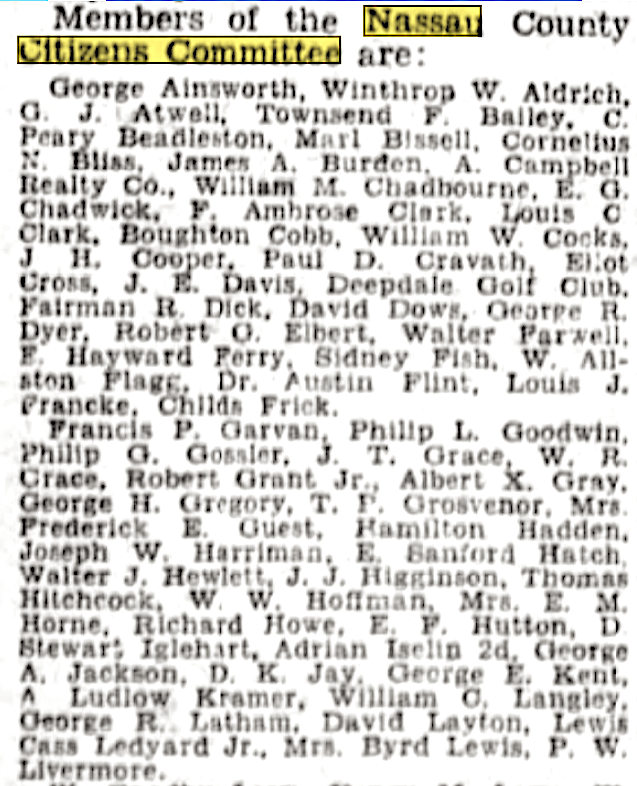
The roster of members included wealthy and influential residents of Nassau County including F. Ambrose Clark, Paul D. Cravath, Childs Frick, W. R. Grace, E.F. Hutton. Interestingly the Deepdale Golf Club is listed as a member. I wonder how many of these were issued a Motor Parkway license plate or seasonal pass. E.F. Hutton I see is on Greg O's list of holders. (Brooklyn Daily Eagle Jul. 30, 1929)
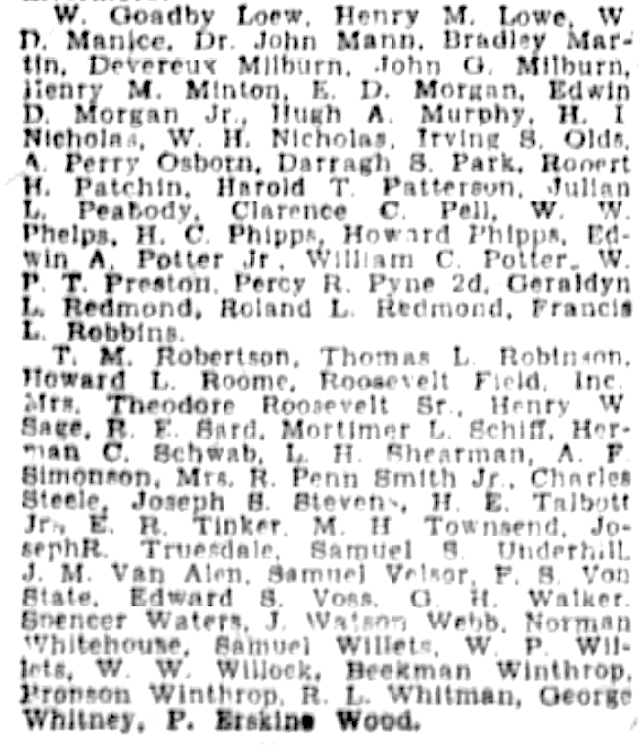
Bradley Martin, Devereux Milburn, Howard Phipps, Samuel Willets, Mortimer L. Schiff, Mrs. Theodore Roosevelt Sr., Roosevelt Field, Inc. (Brooklyn Daily Eagle Jul. 30, 1929)
Robert Moses' Opinion of the NCCC
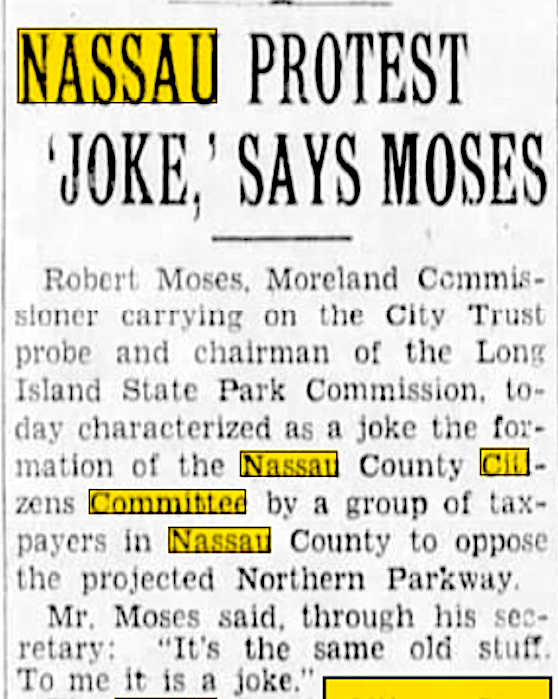
"Its the same old stuff. To me it is a joke." (Brooklyn Daily Eagle May 16, 1929)
Opposition
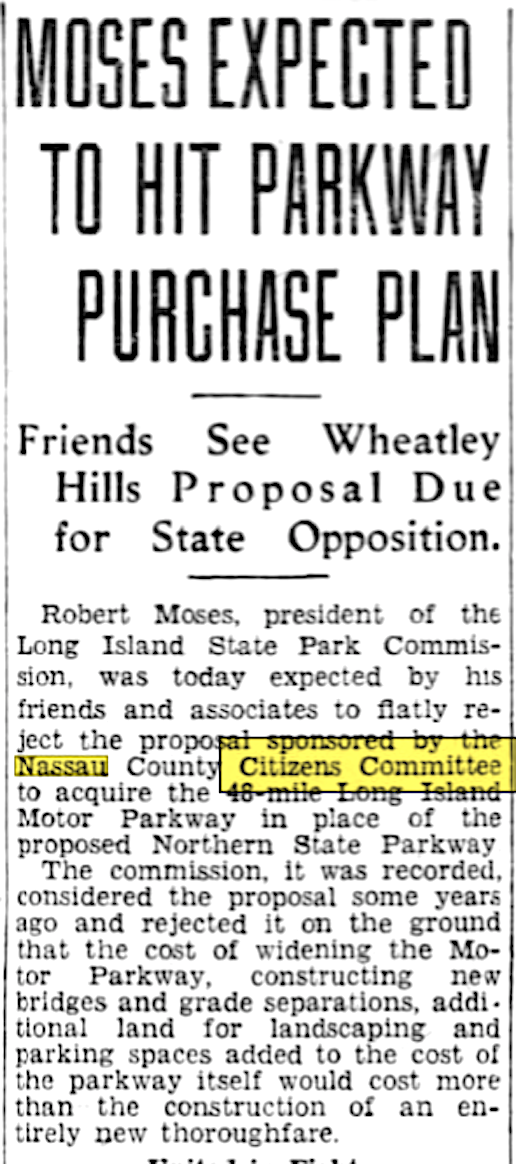
The Long Island State Park Commission, headed by Moses, years earlier rejected using the Motor Parkway for a new thoroughfare due to the cost being higher than building a new roadway. (Brooklyn Daily Eagle Jul. 29, 1929)
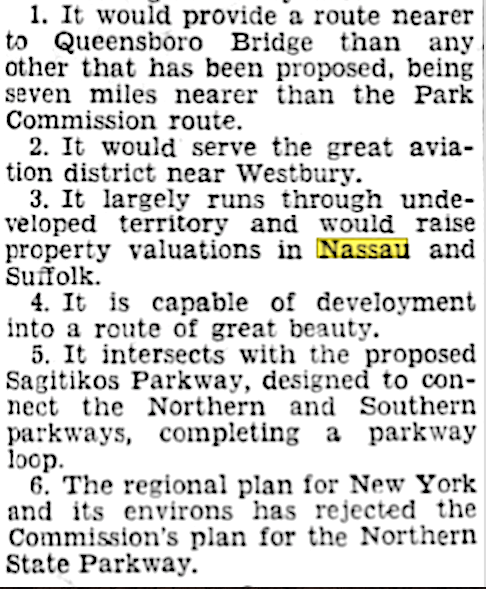
A high level summary of the points for using the Motor Parkway instead of building the Northern State Parkway. (Brooklyn Daily Eagle Jul. 29, 1929)
The Hubbard Report (Courtesy of Al Velocci)

The Harvard official who investigated using the Motor Parkway was Henry Vincent Hubbard, who also was a member of the landscape planning firm of Olmsted Brothers and the first person to earn a degree in landscape architecture.
Reason #1
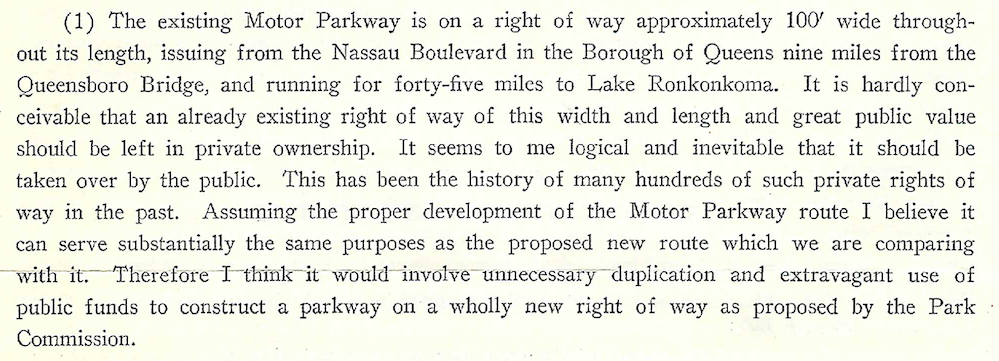
". . . . unnecessary duplication and extravagant use of public funds . . .
Reason #2

" This difference of only seven miles to the approach of Manhattan Island seems to me to be of great public importance and value . . ."

Reason #3
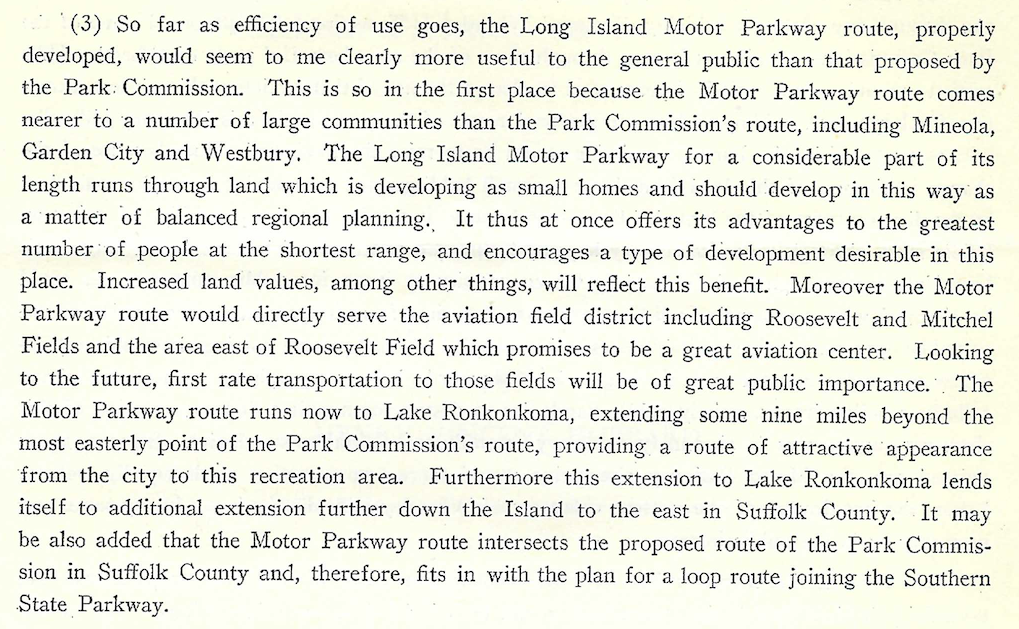
". . . offers its advantages to the greatest number of people at the shortest range, and encourages a type of development desirable in this place." It "would directly serve the aviation district including Roosevelt and Mitchel Fields . . ."
Reason #4
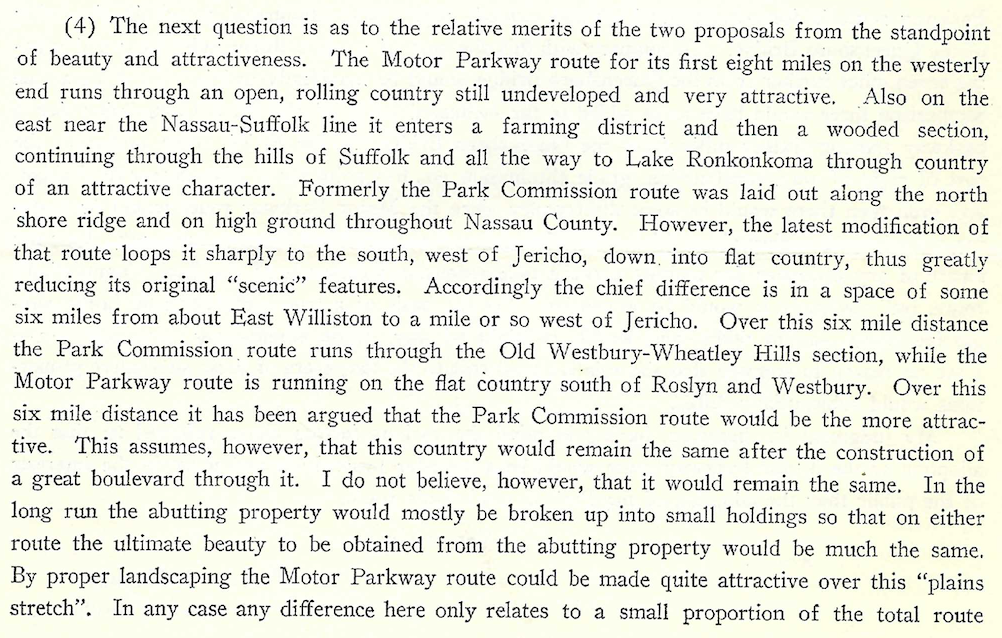
" . . . the Motor Parkway route could be made quite attractive over this plains stretch".

Reason #5
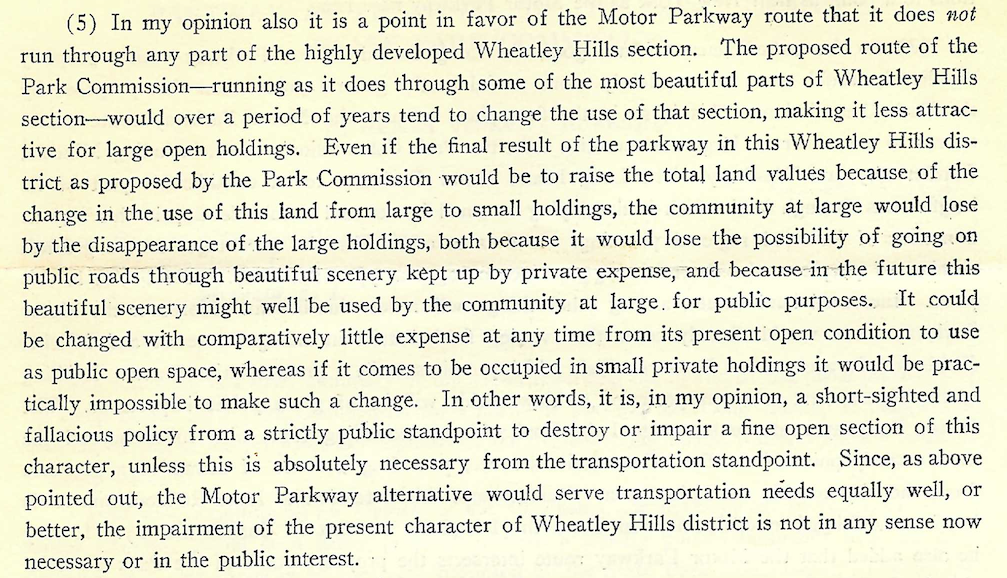
". . . it is a point in favor of the Motor Parkway route that it does not run through any part of the highly developed Wheatley Hills section."
This many believe was the prime reason for the committee members to favor using the Motor Parkway instead of Moses building the Northern State Parkway. I wonder how one would define "highly developed" in terms of Wheatley Hills.
Reason #6
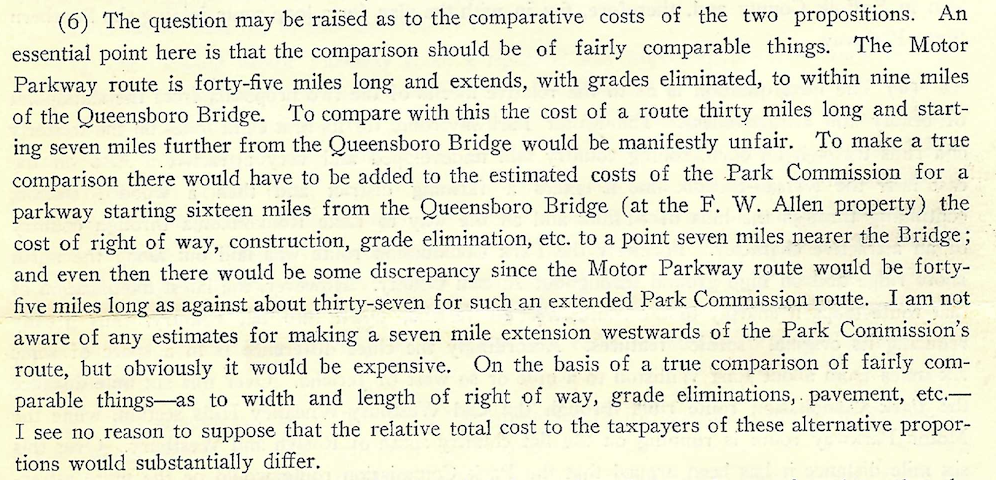
Taking all things into consideration Hubbard did not see a substantial difference in cost between reconditioning the Motor Parkway and the building of the Northern State Parkway.
Hubbard's Conclusion

Stick with the Motor Parkway!
Continued Opposition
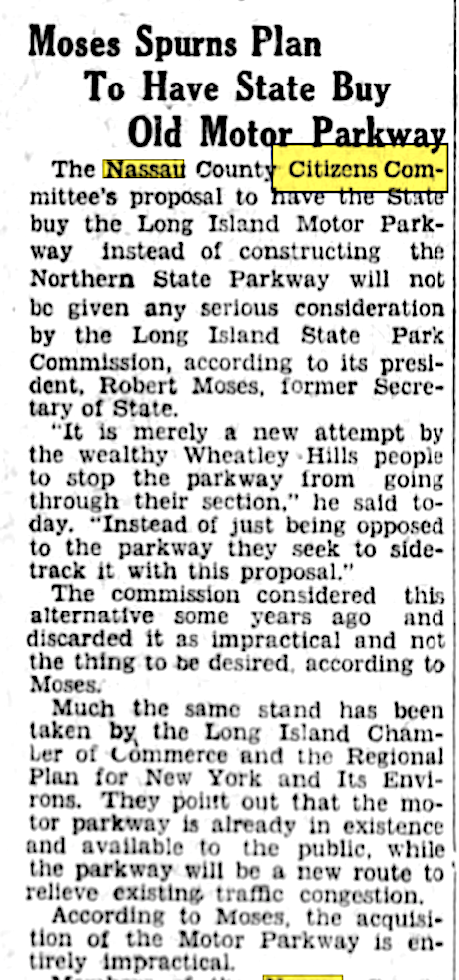
Moses saw the committee as being nothing more than wealthy individuals trying to hold onto their turf. Other Long Island associations agreed that the Motor Parkway should not be a substitute for a new parkway. (Brooklyn Daily Eagle Jul. 30, 1929)
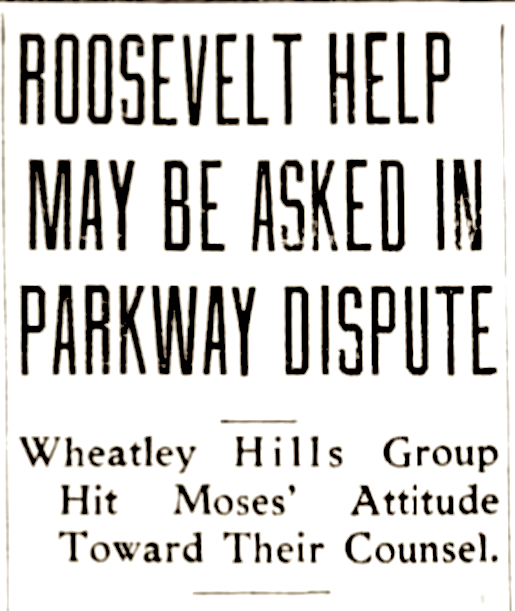
Resulting from Moses' position, the NCCC thought to bring the matter to Governor Roosevelt. (Brooklyn Daily Eagle Aug. 1, 1929)
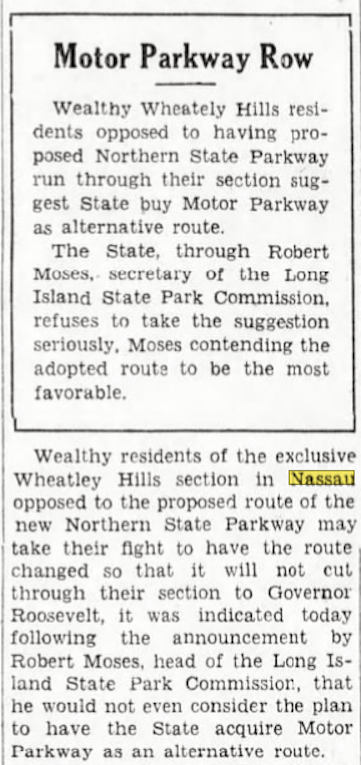
Brooklyn Daily Eagle Aug. 1, 1929

An open letter to the press was penned by Charles P. Stewart representing the NCCC detailed the value of using the Motor Parkway. This was presumably intended to drum up support.
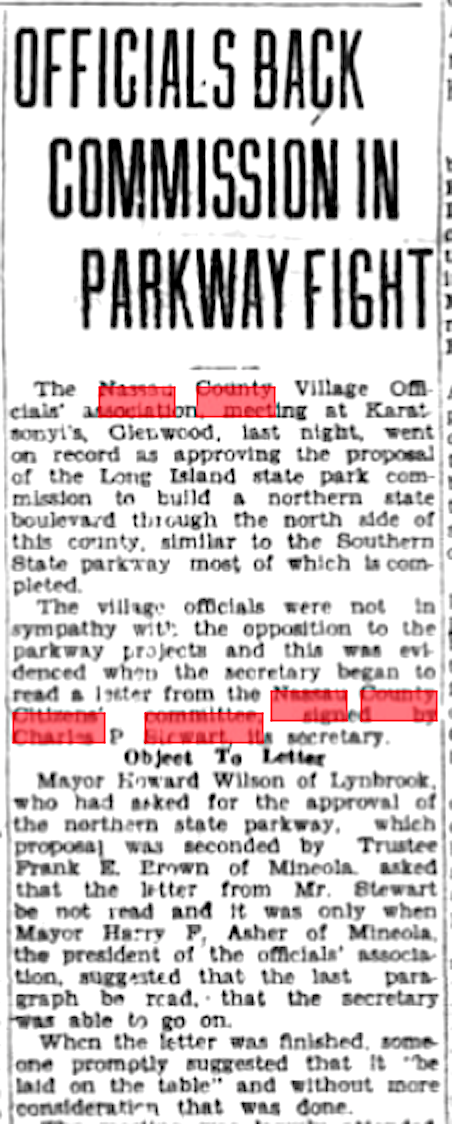
However, the letter did little to change the position of local leaders as it was not looked upon favorably by an organization comprising local village leaders; ultimately the organization approved the proposal by Moses to build the Northern State Parkway. (The Nassau Daily Review Sept. 11, 1929)
The Result
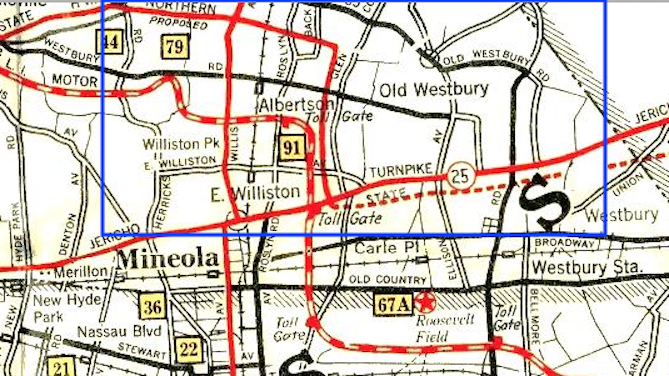
As we know the matter was solved by moving part of the Northern State Parkway further south of the estates and forming the section of the parkway that now runs north and south before turning east. But not before some posturing with politicians and estate owners alike. Click here (in the section titled "History") for a detailed look at how the episode transpired.
The full report issued by Hubbard in pdf. format.

Comments
From Greg O.;
Great Post Art!
Not only E.F. Hutton on the seasonal ticket holder list. Paul D Cravath was #164 using the Parkway to trave to his estate ‘Veraton’ in Lattingtown.
http://www.oldlongisland.com/search?q=Veraton
And W.R. Grace had #165 & 166 featured in Part 1
https://www.vanderbiltcupraces.com/blog/article/do_not_post_greg_os_garage_the_1930_motor_parkway_plate_season_ticket_census
There’s 2 or 3 others I’m seeing as well. Not surprising the NCCC was made up of Parkway regulars.
Art, Well done. Vanderbilt and the Motor Parkway did not did not join any group that opposed Moses efforts. The blank application forms of the N.C.C.C. are still in the Parkway archives at the Vanderbilt Museum. Moses only agreed to shift the Northern State Parkway r. o. w. south in the vicinity of Glen Cove Road after the N.C.C.C. gave Moses $125, 000.00 for “land purchases”
Thanks Greg and Al for the additional detail. Al - is this the application form of which you refer? Its labeled the Long Island Motor Parkway Association but its dated 1929, the year that the NCCC came into existence. And it asks the applicant to indicate the number of acres or size of plot owned. The Chairman is Seth Low, however the only Seth Low I can find is the last mayor of Brooklyn and a former President of Columbia University who died in 1916. Mrs. Seth Low died in 1929. Seth Low Junior College (attended by Isaac Asimov) was a part of Columbia from 1928 -1936. Currently there is a Seth Low Intermediate School in Brooklyn. Could the Motor Parkway advocates have used the name Seth Low as a means to hide their real identity?
I’ve also included the full open letter from Charles P. Stewart to the press and local officials.
Art, The 1929 Seth Low was a nephew of the well known Seth Low. He was a stock broker and in early 1929 headed a group of investors that purchased Roosevelt Field and shortly thereafter acquired the adjoining Curtiss Field. My guess was that he didn’t want the Long Island Motor Parkway to close for obvious reasons hence his early attempt to form a group to fight Moses. Don’t recall if this was the only application form at the Vanderbilt Museum.
The Wikipedia article misses this irony: Once they saw that land values near the NSP skyrocketed (and not plummeted as they feared), some associated with the NCCC effort were lobbying Moses less than 5 years later to build a NSP connector to their lands. No surprise, Moses denied that request.
One wonders whether the biggest problem with the proposal was that it wasn’t made by Robert Moses. Right behind that, he might have had less control, and control / power were very important to him.
The NSP as built is, IMHO, an awful road - but then again, the SSP is even worse!